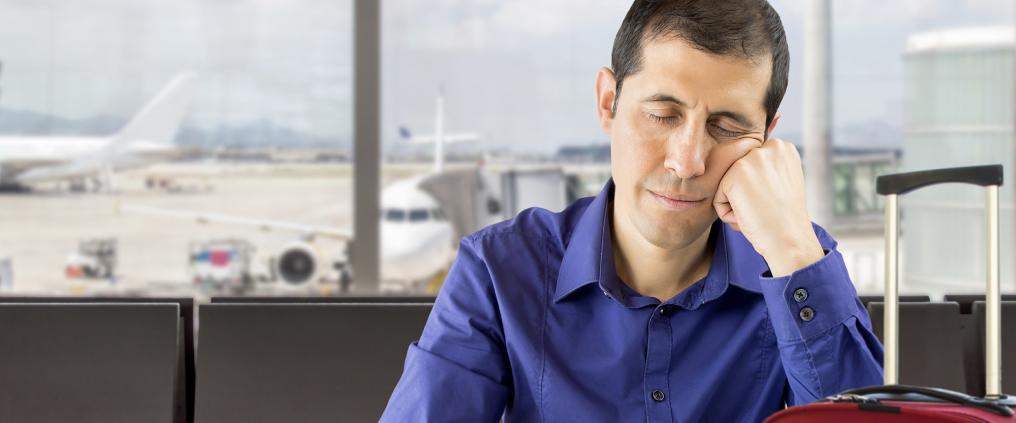Imagine this. You’re planning a nice spring holiday in New York that is full of inspiring things to do and see, but your excitement is overshadowed by concerns about jet lag. Sound familiar? In a worst-case scenario, jet lag can ruin an entire trip.
Jet lag is the result of your internal clock lagging behind after a rapid change in time zones. Your internal clock can be very slow in responding to the change and adjusting to a new time zone.
The most common symptoms of jet lag are tiredness and insomnia. Travelers may also suffer from stomach pain, dizziness, and irritation. Your ability to focus may be affected, and jet lag can even result in temporary memory defects.
“The more time zones you skip over while flying, the more your internal clock will lag behind and the longer your jet lag will last. Even a transition of just one hour can be disruptive,” says research professor Timo Partonen from the National Institute for Health and Welfare.
When flying from Helsinki to Los Angeles, for example, the time difference is ten hours and the expected length of your jet lag is four days. When travelling east, the jet lag will take approximately a day longer because it is more difficult to reduce the circadian rhythm than extend it.
All people suffer from jet lag, but fortunately the symptoms of jet lag can be reduced. The following tips will help you, and the steps should be taken before travel, while flying, and upon arrival at the destination. Just remember that if you’re staying at your destination for less than two days, it is often not worth it to shift your internal clock; instead it is easier to just stick to your original time zone.
Before travelling: Start catching up to the new time
Before the trip, try to shift your schedule to your destination’s time zone by even even a few minutes at a time. Going to the bed, waking up, and eating either later or earlier will help. “Lack of sleep should be avoided before travelling. If you are heading on a long flight with sleep deprivation the symptoms of jet lag can feel stronger and last longer,” says Partonen, pointing out that an adult will usually need 6-9 hours of sleep per night.
While flying: Change your internal clock to the new time zone
At the latest once your flight departs should you figure out the time in your destination and shift your sleep schedule according to that time zone. If it is evening or night at your destination, it is important to calm down and try to get some sleep. If it is daytime, it is good to stay awake by reading, watching movies, or doing other things that will keep you awake. “All of this helps the traveler catch up to the new time zone upon arrival,” Partonen explains.
At the destination: Alternate between daylight and darkness
Upon arrival at the destination you should continue living according to the local time zone as established during your flight. If it is evening or night you should avoid bright lights and try to get some sleep. On the other hand, if it is daytime you should go out into daylight no matter how tired you are.
“Getting some light, whether it is sunlight or bright artificial light, into your body through your eyes will help synchronize your internal clock. It is the quickest way to adjust your rhythm,” research professor Partonen says.
The website of the National Institute for Health and Welfare has a Traveller's Health Guide that includes a table of guidance to help synchronize your internal clock with the local time by using daylight or bright lights. Adapting to a new time zone by using light is about twice as fast as doing so without lights.
For example, with a seven hour time difference between Finland and New York, you should be exposed to light as much as possible between 3 and 9 pm local time. Bright lights and sunshine should be avoided between 11 pm and 5 am local time – this is when you should be sleeping. It is important to start following these guidelines immediately upon arrival.
Exercising also helps get into the new circadian rhythm. Jogging or other heavier exercise helps you stay awake and improve your quality of sleep. However, you should cease exercising 2-4 hours before bedtime. In order to avoid the symptoms of jet lag it is also important to stick to a healthy lifestyle. Therefore Partonen’s tips also include avoiding alcohol. “Alcohol always makes sleep lighter and broken, causing snoring and a sore throat. Even a small amount of alcohol in the evening can have harmful effects on sleep."
Read more about flights of Helsinki Airport
http://www.finavia.fi/en/flightconnections/
More information about jet lag: National Institute for Health and Welfare: Traveler's Health Guide
